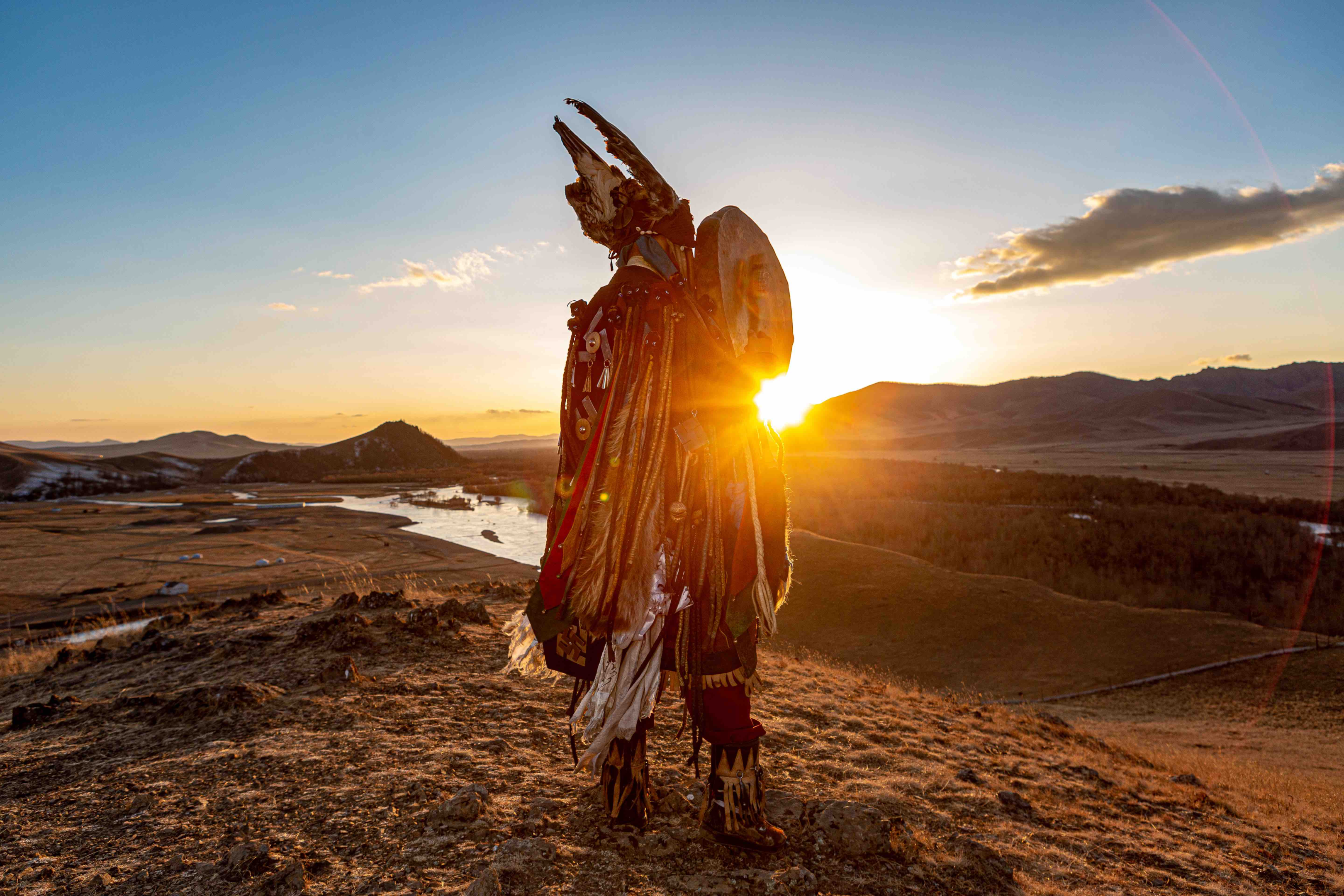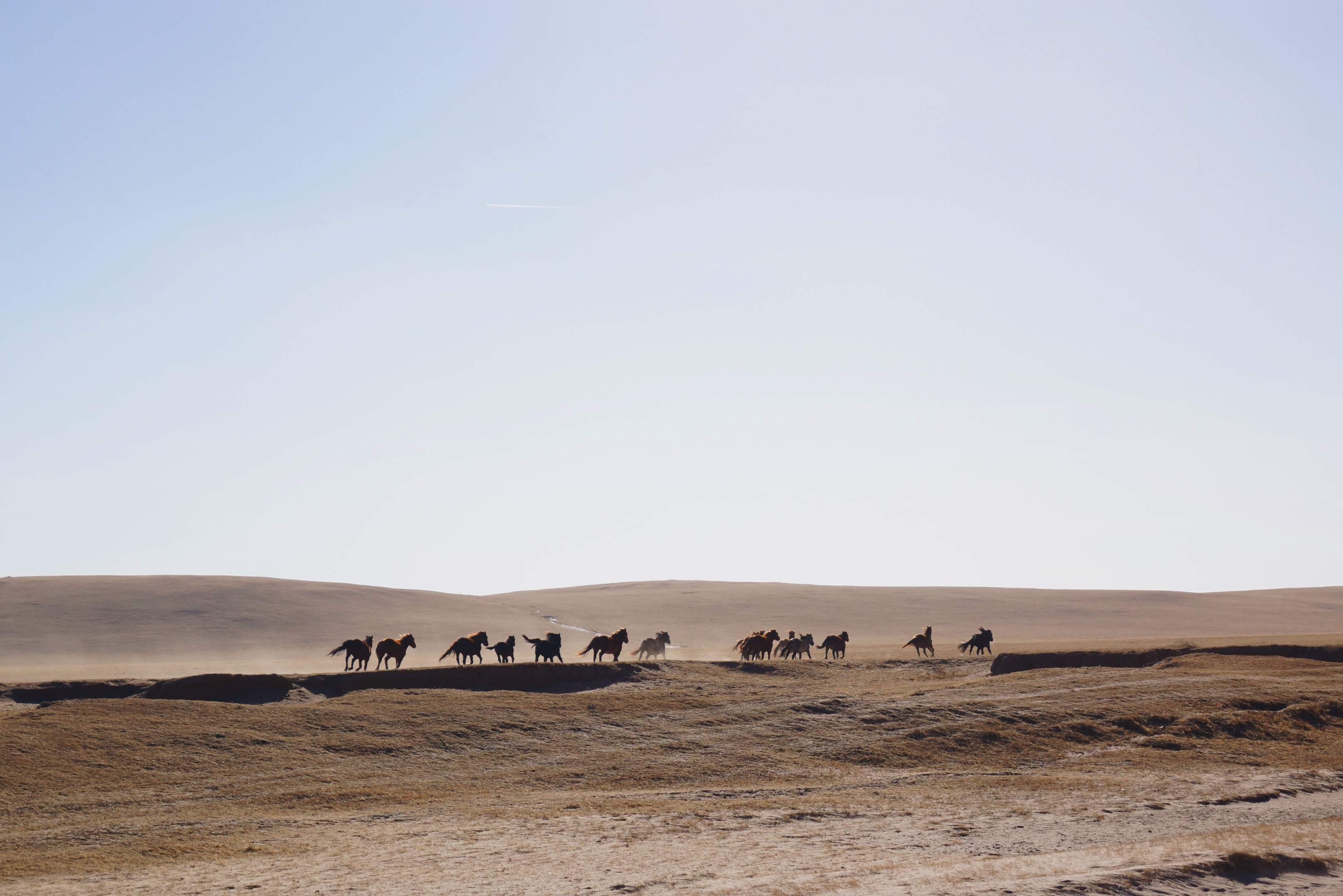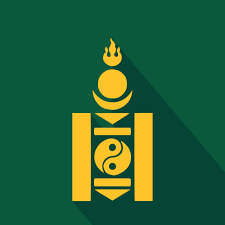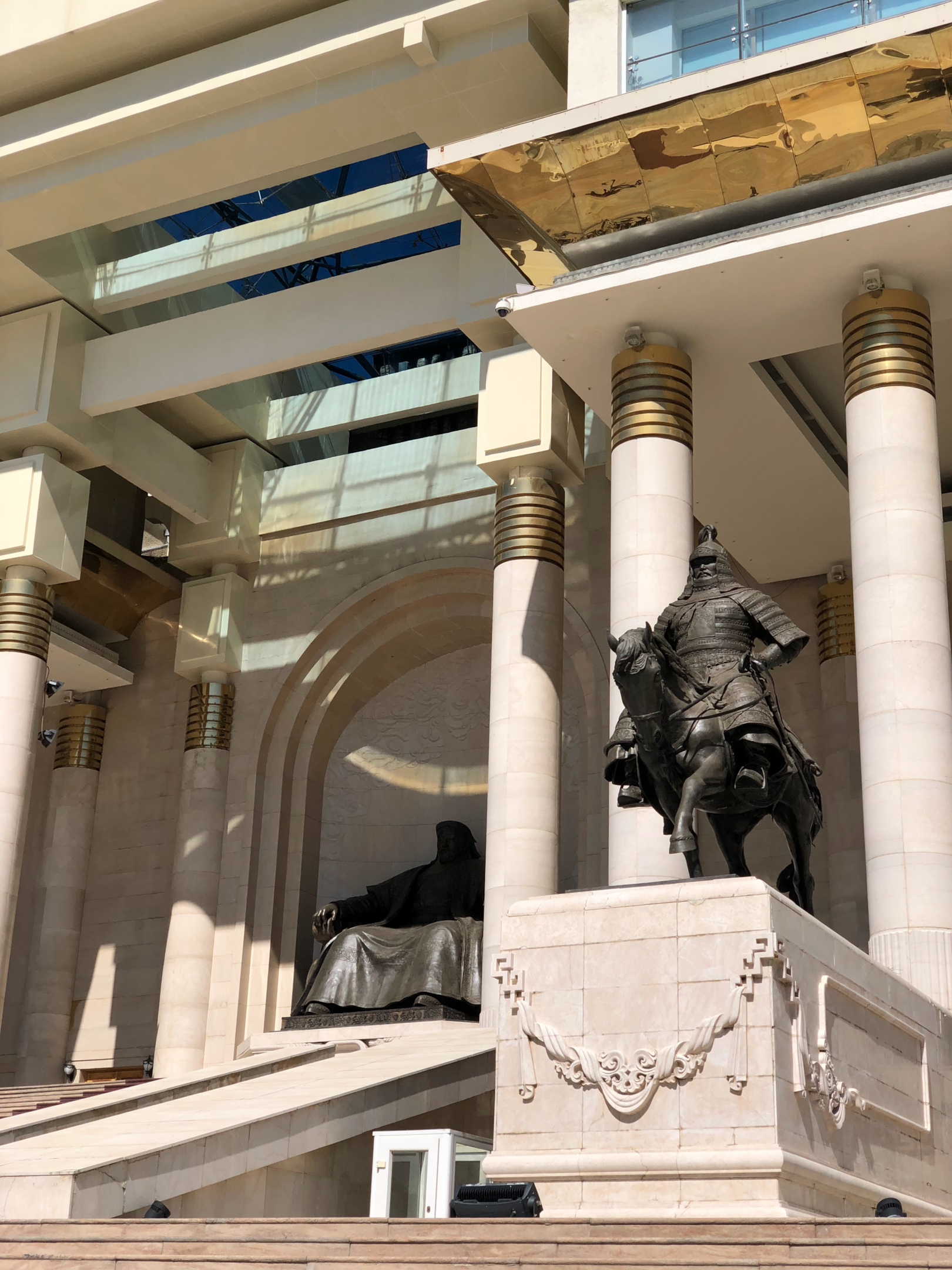Request A Car Rental
Travelling to Mongolia and need a car rental plus extra equipments?
Exploring the Symbols of Religion in Mongolia: A Look at Tengrism
Mongolia, a land of vast steppes and rugged mountains, has long been home to a unique spiritual landscape. At the heart of this ancient culture lies Tengrism, a deeply rooted religion that has shaped Mongolian identity and values for centuries. Journey with us as we explore the intriguing symbols of religion in Mongolia, rituals, and beliefs of Tengrism, and discover how this ancient faith continues to influence Mongolia to this day.
Key Takeaways
- Tengrism is an ancient Central Asian religion that has profoundly impacted Mongolian culture, emphasizing harmony with nature and veneration of the Sky God Tengri.
- Symbols such as The Eternal Blue Sky, Ancestor Worship and Shamanism are integral to Tengrism in Mongolia.
- Genghis Khan’s commitment to religious tolerance enabled its peaceful coexistence with other faiths while preserving cultural heritage for modern day Mongolia.
Tengrism and Its Influence on Mongolian Culture

Tengrism is an ancient Central Asian religion that emphasizes living in harmony with nature and venerating the supreme deity Tengri, the Sky God, along with ancestor worship and shamanism. This unique faith is deeply ingrained in Mongolian culture and has shaped the values and beliefs of its people for centuries. The Tengriist universe is composed of three realms: the underground, middle realm inhabited by human beings, and the upper spiritual realm. Tengri, the supreme god, is responsible for the creation and governance of the universe.
In the early stages, Tengrism was a dominant ancient religion for the ancient Turks and Mongols who maintained a close bond with nature. They viewed the Sky God, also known as God Tengri, as the one supreme god, seen as the fountainhead of all existence on earth, symbolizing fairness and justice. The religion’s elements made it a distinctive monotheistic religion and spiritual force in Central Asia, influencing the lives of its followers and the course of history. This belief system, deeply rooted in Old Turkic culture and traditions, is also known as the Turkic folk religion, setting it apart from other religions.
The Eternal Blue Sky
Tengri, the celestial sky god and the primary deity of Tengrism, is often associated with the Eternal Blue Sky, symbolizing the boundlessness and perpetuity of the divine presence. The color blue holds deep significance in Tengriism, representing the infinite expanse of the sky and its life-sustaining power. Tengri is considered the origin of all existence on earth and is linked to equity and justice.

In Tengrism, the Eternal Blue Sky represents a potent symbol, capturing the link between the earthly and heavenly realms. It persistently underscores Tengri’s ubiquitous presence and providence, steering and shielding the Mongolian people throughout life’s ups and downs.
Ancestor Worship
Ancestor worship is a fundamental aspect of Tengrism, reflecting the deep respect and reverence Mongols hold for their forebears. In this ancient practice, it is believed that ancestors’ spirits continue to guide and protect their descendants, bestowing blessings and wisdom upon those who honor them. Ancestor worship varies from region to region, typically involving offerings of food, drink, and incense, as well as prayers and rituals. These acts of devotion are believed to forge a connection with the spirits of the ancestors, maintaining a sense of continuity and unity within the community.
Through the veneration of ancestors, Tengrists highlight the significance of sustaining a powerful bond with their origins and cultural ancestry. This time-honored practice has molded Mongolian society for centuries, nurturing a profound connection between the living and the spiritual world, and strengthening the values and conventions that carve out their distinct identity. By examining this practice from a Chinese historical perspective, we can gain a deeper understanding of the cultural connections between these neighboring regions.
Shamanism
Shamanism stands as a core facet of Tengrism, fulfilling a pivotal role in bridging the human and spiritual domains. Shamans, functioning as spiritual go-betweens, have the singular capability to interact with the divine and traverse the diverse echelons of the Tengriist cosmos. They are responsible for conveying the wishes of their followers to divine guides on the fifth level of Heaven, where the Ak Tengris reside.
Shamans are also closely associated with Erlik, the deity of the Underground World in Tengrism, a shamanistic religion. In times of disaster or illness, shamans use their spiritual powers to restore balance and harmony within the community, drawing upon their intimate connection with the forces of nature and the guidance of Tengri. This ancient practice has been an integral part of Mongolian culture for centuries, and continues to shape the spiritual landscape of the region to this day, as the shamanistic religion practiced by many.
Symbols of Tengriism in Mongolian Art and Architecture
Mongolian art and architecture serve as a testament to the enduring influence of Tengrism, with many of its symbols prominently displayed in various forms. From the majestic World Tree to the sacred animals that grace the landscapes, these symbols offer a glimpse into the spiritual heritage of the Mongolian people and their deep connection with the natural world.
In addition to the symbols directly associated with Tengriism, Mongolian art and architecture also incorporate elements of other religious and cultural influences. This blending of traditions reflects the inherent tolerance and adaptability of Tengrism, which has allowed it to coexist and thrive alongside various other faiths throughout history.
The World Tree
In Tengrism, the World Tree symbolizes the linkage among the three domains of the Tengriist cosmos: the underground, middle, and upper spiritual spheres. This potent symbol embodies the connection between the earthly and heavenly realms, in addition to the unison of all life forms, including our mother earth.
Often depicted with nine leaves, the World Tree symbolizes the nine directions of the universe in Tengrism. This sacred symbol serves as a reminder of the interconnectedness of all existence and the divine guidance that Tengri provides to the Mongolian people throughout their lives.
Sacred Animals

Sacred animals hold a special place in Tengrism, symbolizing various aspects of the religion and its deities. These animals, which include:
- sheep
- cows
- horses
- deer
The close connection between Tengrism and the natural world is often depicted in Mongolian art and architecture, reflecting the reverence for fertile mother earth.
Each sacred animal is associated with a specific deity, embodying the characteristics and attributes of that divine figure. For instance, the horse is related to Tengri, the god of the sky, and represents swiftness, strength, and nobility. The presence of these sacred animals in Mongolian art serves as a reminder of the enduring influence of Tengrism and its spiritual significance in the lives of the Mongolian people.
The Soyombo Symbol

The Soyombo symbol, a national emblem of Mongolia, incorporates elements of Tengrism, Buddhism, and other cultural influences. This intricate symbol represents the eternal growth and success of Mongolia and embodies the nation’s unique spiritual heritage.
As a symbol of national pride and unity, the Soyombo symbol serves as a reminder of Mongolia’s rich cultural legacy and the importance of preserving and celebrating its distinctive identity. By incorporating elements of Tengrism and other religious traditions, the Soyombo symbol reflects the tolerant and adaptable nature of Mongolian spirituality, which has allowed the nation to thrive and evolve throughout the centuries.
Genghis Khan and Tengrism
Genghis Khan, one of the most well-known mongol rulers, established the largest contiguous empire in history and was a follower of Tengrism. His adherence to this ancient faith, along with his promotion of religious tolerance, allowed for the peaceful coexistence of various faiths within the Mongol Empire, including Buddhism, Islam, and Christianity.
The legacy of Genghis Khan continues to influence Mongolian culture and identity today, with his devotion to Tengrism serving as a powerful testament to the enduring significance of this ancient faith. By attributing his success to the guidance of Tengri, Genghis Khan demonstrated the importance of maintaining a strong connection with the spiritual world and the values associated with Tengrism.
Religious Tolerance

Genghis Khan’s religious tolerance set a remarkable precedent for the coexistence of various faiths within the Mongol Empire. He recognized the value of diverse spiritual beliefs and practices and provided tax relief to Buddhist monasteries, fostering an environment of mutual respect and understanding among his subjects.
This policy of tolerance allowed for the flourishing of various world religions within the Mongol Empire, reflecting Genghis Khan’s inherent respect for the spiritual beliefs of others. His ability to embrace diverse religious traditions while remaining true to his Tengriist faith demonstrates the enduring adaptability of Tengrism and its capacity to coexist harmoniously alongside other beliefs.
Legacy of Genghis Khan

The enduring influence of Genghis Khan and his commitment to Tengrism persistently mold Mongolian culture and identity. As the originator of the Mongol Empire, Genghis Khan displayed his dedication to the tenets of Tengrism and advocated for religious tolerance, facilitating the harmonious coexistence of diverse faiths in his territory.
Genghis Khan’s devotion to Tengrism serves as a powerful reminder of the spiritual roots of Mongolian culture and the importance of preserving and celebrating this unique heritage. His legacy continues to influence modern-day Mongolia, as the nation strives to maintain a strong connection with its Tengriist traditions while embracing the diversity of religious beliefs and practices present in contemporary society.
Revival of Tengrism in Contemporary Mongolia
Present-day Mongolia sees a revival in interest for Tengrism, viewed as a method for conserving and honoring the country’s distinct cultural legacy. This rejuvenation movement, gaining traction since the 1990s, aims to reestablish Mongolian’s connection with their native spiritual roots and cultivate a more profound comprehension of their ancestral customs.
As Mongolia continues to evolve and adapt to the challenges of the modern world, the revival of Tengrism serves as a powerful reminder of the enduring significance of this ancient faith. By embracing the principles and values of Tengrism, Mongolians are able to forge a strong connection with their spiritual heritage and maintain a sense of continuity and unity within their diverse cultural landscape.
Combining with Other Beliefs
Tengrism is often practiced alongside other religious beliefs, such as Buddhism and Islam, reflecting its inherent tolerance and adaptability. This blending of faiths allows for the peaceful coexistence of diverse spiritual traditions within Mongolia, and fosters a deeper understanding and appreciation of the nation’s rich cultural heritage.
The ability of Tengrism to incorporate elements of other beliefs and practices demonstrates its enduring relevance and resilience in the face of changing times and societal pressures. As Mongolia continues to navigate the complexities of the modern world, the revival of Tengrism serves as a powerful testament to the nation’s commitment to preserving its unique spiritual heritage and fostering an inclusive and tolerant society.
Preservation of Cultural Heritage
The resurgence of Tengrism in Mongolia functions as a tool for safeguarding and commemorating the country’s singular cultural legacy and identity. As a faith with ancient roots embedded in Mongolian history, Tengrism personifies the values and customs that have influenced its people for centuries.
By embracing the principles of Tengrism and incorporating its symbols and rituals into their daily lives, Mongolians are able to forge a strong connection with their ancestral heritage and maintain a sense of continuity and unity within their diverse cultural landscape. This enduring commitment to preserving the nation’s spiritual roots demonstrates the profound impact of Tengrism on the hearts and minds of the Mongolian people, and its continued relevance in the modern world.
Summary
From the vast steppes and rugged mountains of Mongolia to the hearts and minds of its people, Tengrism remains a powerful force in shaping the nation’s culture and identity. Whether through the enduring symbols of its art and architecture, the legacy of Genghis Khan, or the revival of this ancient faith in contemporary Mongolia, Tengrism continues to offer a unique spiritual perspective that transcends time and space. As the world continues to change and evolve, the timeless wisdom and guidance of Tengrism serve as a steadfast reminder of the importance of preserving our cultural heritage and celebrating the diverse spiritual traditions that unite us all.
Frequently Asked Questions
What was the religion of Mongolians?
Mongolian religion is dominated by Buddhism (51.7%) and Mongolian Shamanism (2.5%), with smaller populations of Muslims (3.2%), Christians (1.3%), and followers of other religions (0.7%). Historically, the Mongols were known to be very tolerant towards different religions.
What does the Ulzii symbol mean?
The Ulzii, also known as the Eternal Knot, is an important cultural symbol signifying the infinite love and interdependence of all things. It is believed to bring knowledge, bliss, happiness, prosperity, long life, grace, aptitude and peace to its owner.
What are the holy animals in Mongolia?
The four holy animals of Mongolia are the Dragon, Tiger, Snow Lion, and Garuda.
What is the belief of Tengrism?
Tengrism is an animistic system of beliefs that consists of medicine, religion, a reverence of nature and ancestor worship. It believes in a single supreme God - Tengri, who is unknowable and aware of everything. His presence is often invoked with the phrase "only Tengri knows".
What is the primary deity in Tengrism?
Tengri, or the Sky God, is the primary deity of Tengrism and is revered as the supreme god.
Request A Car Rental
Travelling to Mongolia and need a car rental plus extra equipments?






